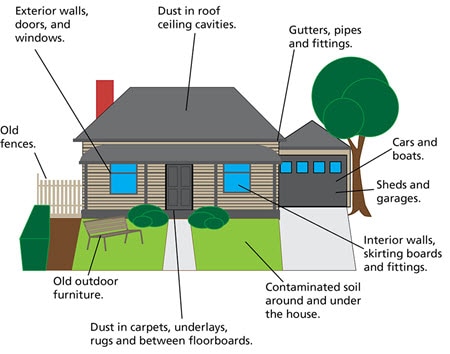Where you may find lead-based paint
Homes built before mid-1970s and particularly before 1940 are most at risk of containing lead-based paint.
But even newer houses, sheds and fences may have interior or exterior surfaces or structures that were painted with old lead-based paint. Renovations like removing walls, replacing ceilings, flooring and carpets can mobilise dust that may contain lead-paint dust or flakes from previous renovations.
It is not possible to know if paint has lead in it by its appearance alone.
You should assume all houses contain lead-based paints if they were built:
- prior to the mid-1970s
- up to the 1940’s it is especially hazardous because there was so much lead used in paints at that time
- after the mid-1970s can still be a risk if old house paint, industrial or marine paint has been used.
Lead may be present in both topcoats and undercoats and particularly on surfaces like:
- exterior walls, doors and windows
- rooves, gutters, pipes and fittings
- sheds and garden furniture
- interior walls, skirting boards and fittings
- ceiling spaces, wall cavities, under floors, in carpets due and in the soil due to lead dust and paint flakes from previous renovations.
In the past, lead-based paint has also been used on:
- cars and boats
- old furniture, including baby cots and garden chairs and benches
- children’s toys, particularly old inherited toys, collectible lead soldiers or those bought from markets, garage sales or overseas
- artist or hobby paints
Follow the six step guide (PDF 856KB) if any of these items are restored, renovated or used by young children.
